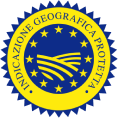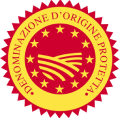Agri-food products
Carousel_le_procedure_dettaglio
Procedures for recognition
Do you want to become part of the Denomination world?



Learn more about the procedures for recognition as a Protected Designation of Origin (PDO), Protected Geographical Indication (PGI) and Protection Consortia.

Breadcrumb
Agroalimentare Intro
How to register a PDO
or a PGI agri-food product
Two types of recognition:
Recognition as «Protected Designation of Origin» (PDO): it is a name identifying a product originated in a specific geographical area, which determines its standards of quality and specific characteristics. Production must entirely take place in the defined geographical area.
For further details, see Regulation (EU) No 1151/2002 Article 5, Commas 1 and 3.
Recognition as «Protected Geographical Indication» (PGI): it is a name identifying a product originated in a specific geographical area, which influences its quality, reputation or other characteristics.At least one of the production steps must take place in the defined geographical area.
For further details, see Regulation (EU) No 1151/2002 Article 5, Comma 2.
Both types of recognition share the same procedure, described below.
Procedure title
The procedure
Asset Publisher
An eligible party consists in a group of producers, including associations and Protection Consortia, located in a specific geographical area and involved in the production of the product subject of the application.
The application must be submitted to the Ministry of Agricultural, Food and Forestry Policies and to the authority of the Region/s where the production occurs.
The documents to be filed together with the application are: the Deed of Incorporation and/or the Association’ Statute;the resolution of the assembly of the members of the association; the Product Specification; the name, the address and contact details of the Control Bodies; an historical relation; a socio-economic relation; a technical relation; the appropriate scale map allowing the precise identification of the production area and its borders; the Single Document.
A PDO or a PGI must include a Product Specification composed of the following elements:
- the name to be protected;
- the product description, entailingla raw materials as well as physical, chemical, microbiological and organoleptic characters;
- the definition of the specific geographical area in question;
- elements proving the product being originated in the specific geographical area in question;
- the description of the methods of production and, where necessary, of local methods, loyal and constant, as well as information concerning packaging procedures;
- elements establishing the linkage between the product and the specific geographical area in question;
- the name and the address of the Control Bodies verifying compliance with the law;
- any specific labelling rule of the product in question.
For further details, see Regulation (EU) 1151/2012 Article 7.
The national review of the application follows the stages outlined below:
- the application is examined by the authority of the Region/s where the production occurs;
- the regional authorities transmit a review of the application to the Ministry of Agricultural, Food and Forestry Policies;
- within 90 days, the Ministry proceeds to the review of the application and Provides the applicant and the regional authorities with observations;
- within 60 days of receipt of the communication the applicant provides the Ministry and the regional authorities with an answer;
- In the event of lack of response or failure to address the issues subject of the observations, the Ministry informs the applicant and the regional authorities, of the dismissal of the procedure for registration (by mean of specific legal act);
- in the event of a positive review of the application, the Ministry transmits the Product Specification to the regional authorities and to the applicant.
At the end of the national review of the application, to verify compliance with Regulation (EU) 1151/2012, the Ministry and the involved regional authorities convene a meeting for public assessment. The applicant shall guarantee the circulation of information about the event in the specific geographical area subject of the application. The Product Specification, as approved in the public assessment meeting, is published on the Official Journal of the Italian Republic for transparency requirements and opposition rights.
After 30 days from the publication of the Product Specification in the Official Journal of the Italian Republic and without admissible oppositions having been received, the Ministry adopts a favorable decision on registration of PDO or PGI.
It informs the applicant and the involved regional authorities with a specific provision. Then, it publishes the Product Specification subject of the application on its website and presents the application file to the European Commission (complete of the Single Document, which outlines the features of the Specification).
Within 45 days of receipt, in the event of an opposition, the Ministry assesses its admissibility and, if so, it sends the opposition to the applicant and to the regional authorities. Within 30 days of receipt of the opposition, the applicant prepares counter-arguments to be forwarded to the Ministry and to the regional authorities. Within 30 days of receipt of the counter-arguments, the Ministry reviews them.
In the event of a favorable decision on registration, the Ministry updates the Product Specification subject of the application on its website and, at the same time, presents the application dossier to the European Commission. In the event of a negative decision, the Ministry rejects the application for registration.
Starting from the date of submission of the application to the European Commission, the Ministry may grant, upon request of the applicant, a «Transitional National Protection» to the name.
Starting from the date of entry into force of the Law Decree granting the «Transitional National Protection», the name of the protected object can only be used by operators subjects to the control system.
Products in «Transitional National Protection» are labeled with the name of the product object of protection followed by the wording: «in transient national protection». Anyway, the use of EU symbols and/or the names Protected Designation of Origin, Protected Geographical Indication and related abbreviations, is prohibited.
Transitional National Protection is only effective at the national level and has no effect on intra-Union or international trade. It expires on the date of adoption of a Decision on the registration of a product, pursuant to Regulation (EU) 1151/2012.
The Commission shall scrutinize applications within six months of receipt. If observations are received during this term, the Ministry sends notice to the applicant for the resolution of the highlighted issues.
In the event of a favorable outcome of the examination, the Commission publishes in the Official Journal of the European Union the Single Document and the reference to the publication of the Product Specification.
If no reasonable objections are received within 3 months, the Commission registers the name and the Ministry publishes on its website and on the Official Journal of the Italian Republic the text of the Product Specification of the agri-food product subject of the application.
For further details, see Regulation (EU) 1151/2012 Article 50.
Documentation
Documentation
Asset Publisher
National implementation of the Regulation (EU) 11511/2012 on PDO, PGI, TSG agri-food products.
On quality schemes for agricultural products and foodstuffs.
Integration of the Reg. (EU) 1151/2012.
On the application of the Regulation (EU) No 1151/2012.
amendment on labelling.